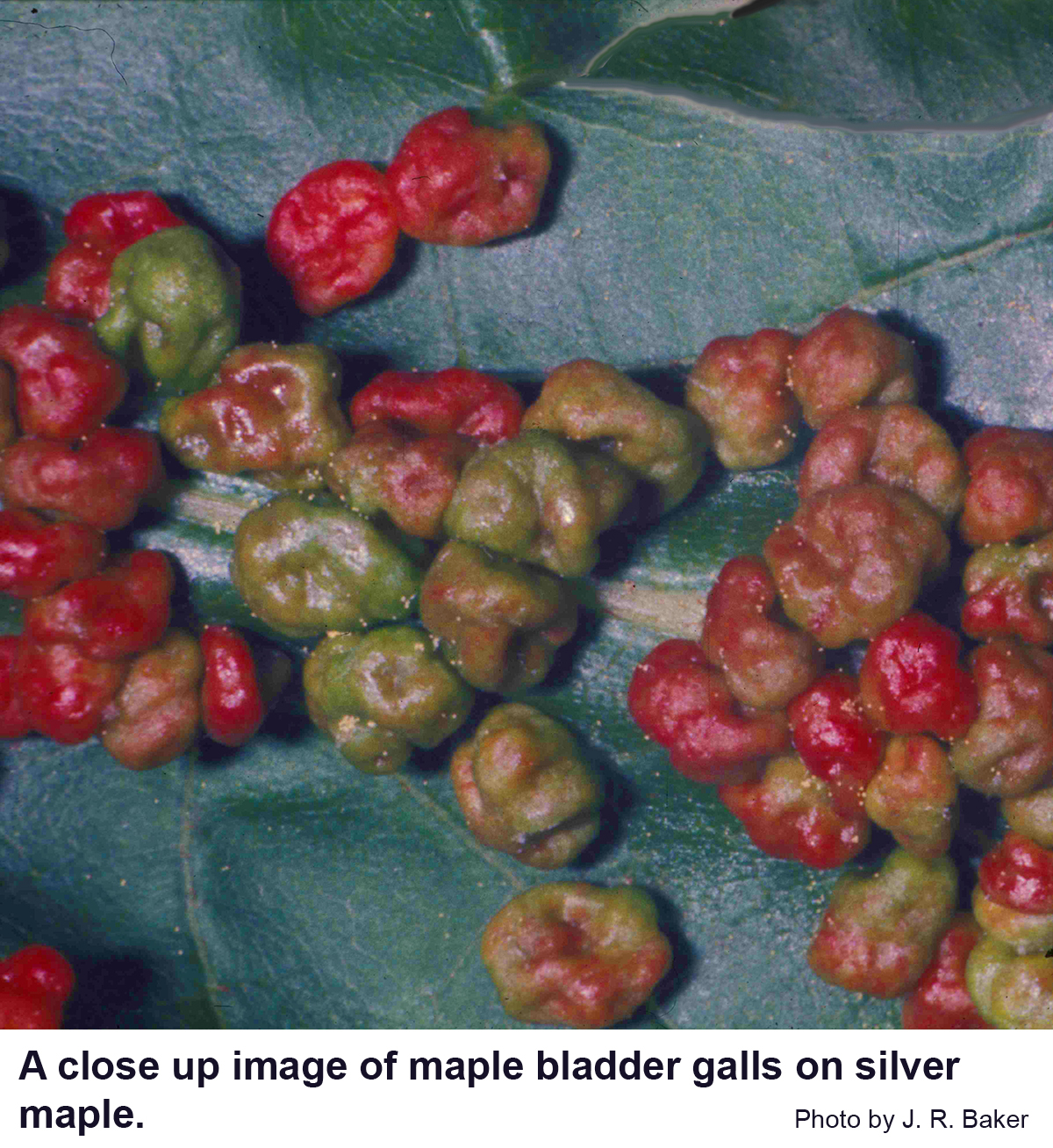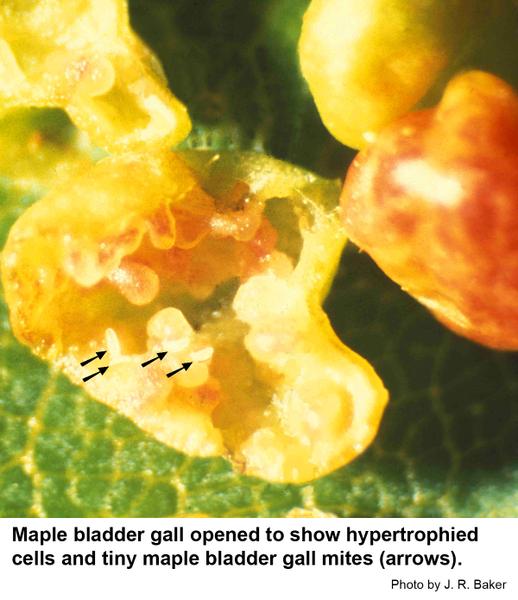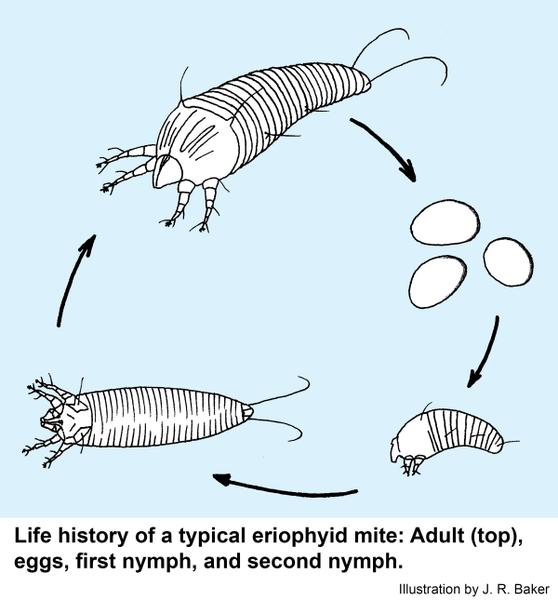Description and Biology
Maple bladder gall mites, Vasates quadripedes, cause tiny wart-like growths on the tops of the leaves. Bladdergall mites are fascinating but microscopic eriophyid mites (mites that have only two pairs of legs). They overwinter on the bark of their host trees in a distinct overwintering form. In early spring as the new growth emerges, the overwintering mites crawl to the foliage and lay eggs from which hatch gall mites that feed on the expanding leaves and induce the host tissue to form galls inside of which the mites feed and reproduce. The offspring of the gall mites are overwintering forms that leave the galls and crawl to the bark to spend the winter.
Host Plants
Although the galls are alarming, they probably do no measureable harm to the tree. Maple bladdergall mites will not infest any other plant except maples, especially silver maple. One characteristic of gall mites is that they are exceedingly specific in their host plants.
Residential Recommendation
If control is desired, eriophyid mites are susceptible to Sevin insecticide and to other pesticides labeled for "mites." The best time to treat is in late fall after maples have dropped their leaves. These mites are small enough that they can wedge into buds and other tight places so the treatment will have to be thorough for good control.
References
- An Illustrated Guide to Plant Abnormalities Caused by Eriophyid Mites in North America. Keifer, H. H.,et al. 1982. USDA ARS Agr. Handbook No. 573. 178 pages.
- Insect and Related Pests of Shrubs. Baker, J. R. ed. 1980. NC Agricultural Extension Service publication AG-189. 199 pp.
- Maple Gall Mites. Frank, S. and J. R. Baker. 2019 (revised). Entomology Insect Notes, NC State Extension Publications.
- Extension Plant Pathology Publications and Factsheets
- Horticultural Science Publications
- North Carolina Agricultural Chemicals Manual
For assistance with a specific problem, contact your local N.C. Cooperative Extension Center.
This Factsheet has not been peer reviewed.
Publication date: May 16, 2014
Reviewed/Revised: March 23, 2024
Recommendations for the use of agricultural chemicals are included in this publication as a convenience to the reader. The use of brand names and any mention or listing of commercial products or services in this publication does not imply endorsement by NC State University or N.C. A&T State University nor discrimination against similar products or services not mentioned. Individuals who use agricultural chemicals are responsible for ensuring that the intended use complies with current regulations and conforms to the product label. Be sure to obtain current information about usage regulations and examine a current product label before applying any chemical. For assistance, contact your local N.C. Cooperative Extension county center.
N.C. Cooperative Extension prohibits discrimination and harassment regardless of age, color, disability, family and marital status, gender identity, national origin, political beliefs, race, religion, sex (including pregnancy), sexual orientation and veteran status.




